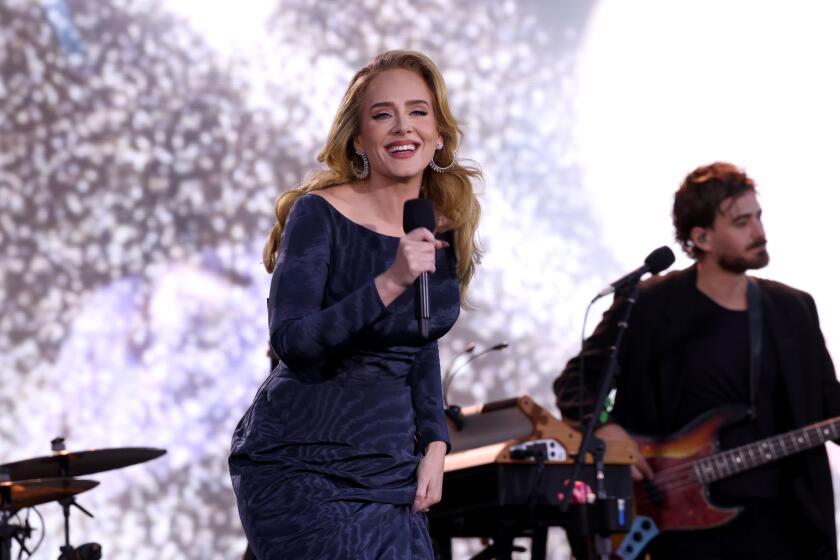Three-sax salute honors Getz
Stan Getz was both the subject and the honoree in the performance of Don Menza’s septet Thursday night at Charlie O’s in Van Nuys. And what better way to honor the jazz icon than with a Four Brothers-style saxophone section and rhythm, featuring three tenor saxophonists, each displaying differing aspects of his multifaceted playing?
Getz, who was 64 when he died in 1991, ranged from the cool, Lester Young-inspired sound of his late ‘40s work with the Woody Herman band to breakthrough bossa nova recordings in the ‘60s and the muscular mainstream playing of his later years. And much of that virtuosity was present Thursday in the efforts of the front-line tenor saxophonists: Menza, Pete Christlieb and Gary Foster.
The pace was set early, with a quick romp through “How About You?” recalling Getz’s ability to find rich, transformative jazz qualities in the standards songbook. “The Girl From Ipanema” -- from Getz’s recording with Astrud Gilberto that bested the Beatles’ “A Hard Day’s Night” for the 1964 record of the year Grammy -- followed in a crisp, jaunty interpretation.
Next up, Menza reached back to a performance that brought the then 20-year-old Getz to national attention -- his brief but mesmerizing solo with the Herman band on Ralph Burns’ “Summer Sequence.” Recalling that influential passage, Menza played it as an unaccompanied solo, followed by a full section rendering of “Early Autumn,” derived from “Summer Sequence” and a hit recording for Herman’s band.
Other pieces were delivered in challenging arrangements by Menza. Most consisted of opening and closing ensemble themes, wrapping around solos by each of the tenor players, with an occasional open spot for baritone saxophonist Gene Cipriano, pianist Tom Ranier, bassist Chris Connors and drummer Steve Schaeffer.
It was the trio of tenors, however, that most fully recalled the memory of Getz. Menza’s playing offered the most literal remembrance, with its warm sound and flowing high notes. Christlieb’s edgier, more assertive style used Getz’s later, harder-edged playing as a model. And Foster’s cool tone and lyrical melodies found the inner, often disguised, sweetness of Getz’s music. Together, they brought to life the memorable music of one of the jazz world’s primary figures -- one too often neglected in the music’s rush through the blandishments of avant-garde, rock, electronica, fusion and pop.
More to Read
The biggest entertainment stories
Get our big stories about Hollywood, film, television, music, arts, culture and more right in your inbox as soon as they publish.
You may occasionally receive promotional content from the Los Angeles Times.








